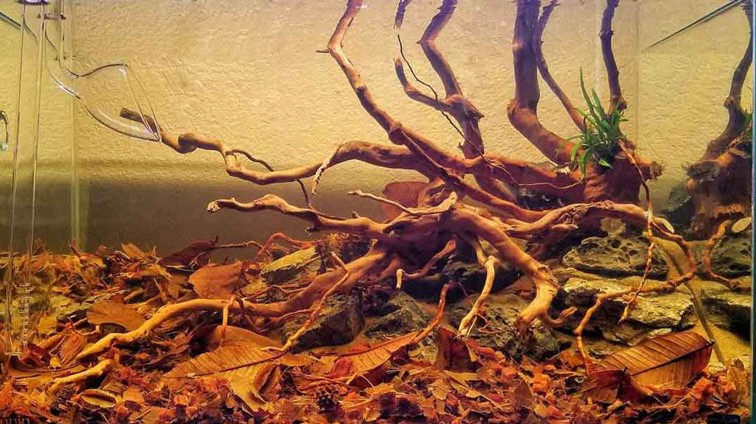
Iwagumi style came about from the Japan art of stone appreciation. The community applies the term to rock only aquascapes, usually in an open field concept with carpeting plants, where the main focus is to show off and draw attention to the magnificent beauty of the rock work. It might seem simple but it takes skill to achieve the balance necessary for aesthetic rock arrangements. Having fewer elements also means that flaws stand out a lot more.
Last updated 1 day(s) ago

Nature style is great for beginners starting their first planted aquarium. Nature style scapes utilize natural stones, rocks and wood to provide a sense of flow and direction to the overall composition. Rhizome plants and moss type plants are used on hardscape while carpeting plants are grown on the foreground. Choosing a mix of lower maintenance plants means that aquascapes like these may look complex, but are actually quite easy to maintain.
Last updated 1 day(s) ago

Biotope setups attempt to recreate the natural aquatic environment accurate to a certain geographical area. Some will go as far as to collect local rocks and plant species from the specific region. This is one of the most naturalistic ways to present fish. Often the tanks also make use of leaf litter & driftwood branches to mimic natural leaf fall in rivers & lakes.
Last updated 1 day(s) ago

Dutch style aquascapes are focused on showing off the beauty of aquatic plants by playing on the contrast in texture, shapes and colours of different aquatic plants. Little or no hard scape (rocks/wood) is used. There should be a good variation of height in the tank as a whole. Terracing arrangement of plants in “streets” that taper towards the rear help to put emphasis on the perspective of depth. Red plants with distinctive leaves are often used as focal points and for contrast. There should be little/no glass visible (except for front viewing pane).
Last updated 1 day(s) ago